Historical ballet photography captures the grace and evolution of ballet over the years. The role of an artistic director, such as George Balanchine of the New York City Ballet, is crucial in shaping the creative vision and direction of ballet companies. This article explores notable photographers and iconic images that documented pivotal moments in ballet history. Discover how photographers immortalized the beauty and artistry of ballet through different eras.
Introduction to Ballet Photography
Ballet photography is a unique and captivating art form that requires a deep understanding of dance, lighting, and composition. Capturing the fluid movements and emotional expressions of dancers in a single frame is no small feat. The New York City Ballet and the Royal Ballet are two of the most renowned ballet companies in the world, each with a rich history of producing iconic performances that have been immortalized through photography.
Rare photos of dancers from the 1930s to the 1950s provide a fascinating glimpse into the past, showcasing the evolution of ballet and its performers. These images are invaluable in preserving the history of ballet, allowing us to appreciate the artistry and dedication of dancers from previous generations.
The Royal Ballet School and the American Ballet Theatre are two of the most prestigious ballet schools globally, nurturing talented principal dancers who go on to perform with top companies.. The rigorous training and discipline instilled in these institutions are often captured in photographs, highlighting the journey from student to professional dancer.
Over the years, ballet photography has undergone significant evolution. Advances in technology have allowed photographers to capture more dynamic and expressive images, enhancing the visual storytelling of ballet. Today, ballet photography remains an essential part of the dance world, celebrating the beauty and grace of this timeless art form.
Key Takeaways
- The evolution of ballet photography began in the early 20th century, capturing the artistry of dancers and the dramatic storytelling inherent in ballet performances.
- The Ballets Russes era revolutionized ballet with innovative choreography and iconic performances, greatly influencing the visual representation of the art form through photography.
- Photographers have been integral to documenting ballet’s history, with their work continuing to inspire future generations and showcasing the art’s enduring beauty and relevance.
The Early Days of Ballet Photography
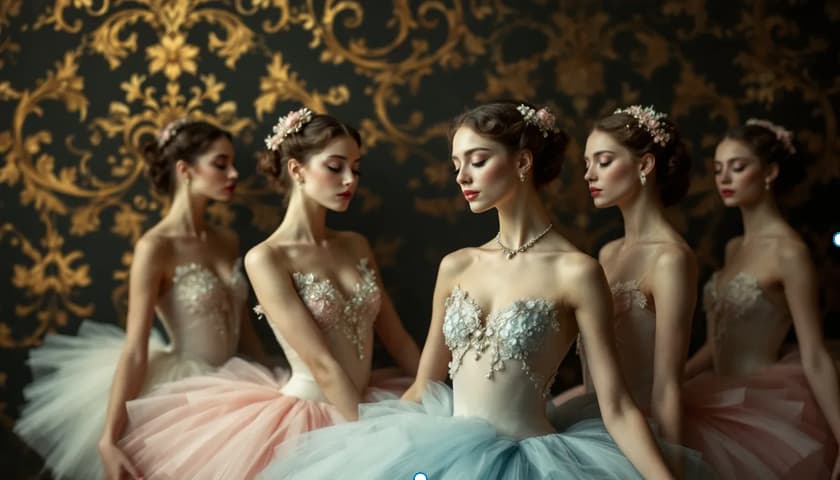
The early days of ballet photography were marked by a fascination with capturing the intricate movements and emotional expressions of dancers. Serge Lifar, a prominent figure in the early 20th century, was known for his dynamic performances and influence on ballet. His elegant portrayals were frequently photographed, providing a visual record of ballet’s formative years. Similarly, Tatiana Riabouchinska, celebrated for her artistry, was often the subject of early ballet photographs, showcasing the delicate beauty of the art form.
The early 1900s saw a rise in the popularity of ballet photography, with photographers like Max Dupain capturing performances from unique perspectives that highlighted the movement and fluidity of dance. Dupain’s work, along with that of his contemporaries, played a significant role in documenting the aesthetic of early ballet photography. These photographs often reflected the dramatic elements of performances during rehearsals, enhancing the visual storytelling of dance.
St Petersburg, particularly the Mariinsky Theatre around 1900, played a pivotal role in the evolution of ballet photography. Production shots from this era emphasize the rich cultural heritage and opulent staging of ballets in the city.
The visual history of ballet from this era highlights not just the dancers but also the photographers who brought their artistry to life. Early photographers’ ability to capture the essence of ballet significantly contributed to the art’s visual history, preserving moments that continue to inspire and captivate us today.
The Ballets Russes Era
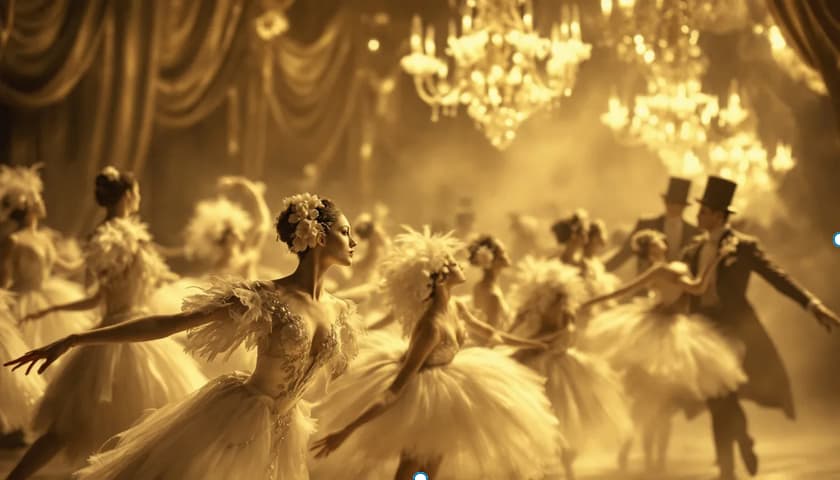
The Ballets Russes, founded by Serge Diaghilev in 1911, revolutionized the world of ballet. This era was marked by a blend of classical and experimental styles that pushed the boundaries of traditional ballet. The troupe’s performances in Paris during 1909 were met with overwhelming enthusiasm, establishing Russian ballet as a global phenomenon.
Celebrated dancers like Anna Pavlova and Vaslav Nijinsky were among the stars of the Ballets Russes. Their performances captivated audiences and brought a new level of artistry to ballet. Photographs from this era depict these iconic figures in action, highlighting their contributions to the fame and legacy of the Ballets Russes.
Innovative ballets such as ‘The Firebird’ and ‘The Afternoon of a Faun’ premiered during this time, highlighting the troupe’s creative spirit. Photographs from these productions emphasized the rigorous rehearsals and innovative choreography that defined early 20th-century ballet. The Ballets Russes era remains a pivotal moment in ballet history, celebrated for its artistic achievements and its influence on the future of ballet.
George Balanchine’s Vision
George Balanchine, co-founder of the New York City Ballet in the late 1940s, profoundly influenced the visual representation of ballet through photography. His innovative choreography is captured in iconic photographs showcasing the elegance and movement of the dancers dressed in his ballets.. Notable images from Balanchine’s productions often feature celebrated dancers like Maria Tallchief, highlighting the unique choreography in pieces such as “Serenade”.
Maria Tallchief, regarded as America’s first major prima ballerina, played a significant role in popularizing ballet in the United States. Her powerful stage presence and collaboration with Balanchine brought a new level of artistry to the New York City Ballet.
Tanaquil Le Clercq, a muse of Balanchine, was celebrated for her ethereal grace and significant contributions to mid-20th-century ballet.
Suzanne Farrell, one of the foremost dancers of her time, gained prominence through her performances in works created by Balanchine specifically for her. These dancers, through their unique styles and artistry, popularized ballet in America and left a lasting legacy that continues to inspire ballet dancers and choreographers.
Martha Graham’s Influence
Martha Graham, a pioneering figure in modern dance, redefined movement and expression. Her collaboration with photographer Barbara Morgan resulted in some of the most iconic images of her performances. The book ‘Martha Graham: Sixteen Dances in Photographs’ features stunning photographs that capture the essence of Graham’s innovative choreography.
These photographs showcase Graham’s artistry and highlight the synergy between dance and photography. Barbara Morgan’s ability to capture the fluidity and emotion of Graham’s performances was crucial in documenting this transformative period in dance history. Through their collaboration, Graham’s influence on modern dance was immortalized, inspiring future generations of dancers and choreographers.
Iconic Ballet Productions
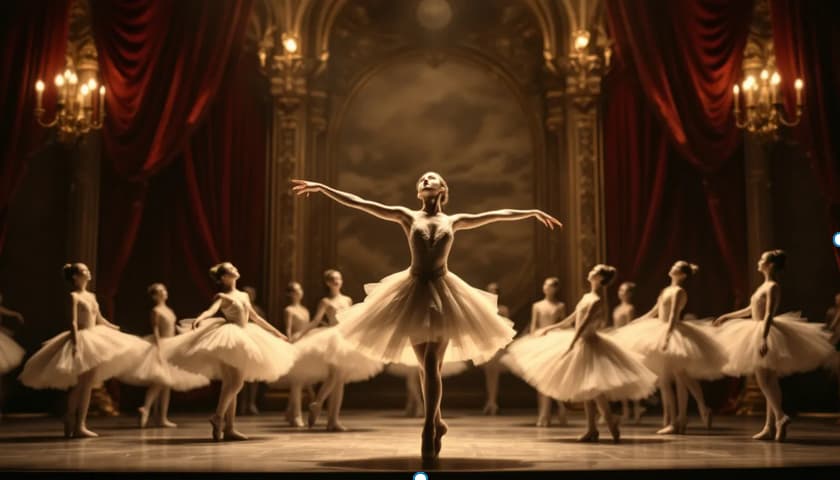
Iconic ballet productions like “Swan Lake“, “The Nutcracker“, and “Don Quixote” have been immortalized through a powerful collection of photographs taken by the company. These images capture the emotional depth and complexity of the cast’s performances, enabling audiences to experience the magic of ballet, long after the performance has taken place, and will continue to do so.
‘Swan Lake’ is renowned for its hauntingly beautiful choreography and remains a favorite subject for photographers. The elaborate costumes and enchanting stage designs of ‘The Nutcracker’ make it a staple of ballet photography, especially during the holiday season. ‘Don Quixote’, with its vibrant choreography and character portrayals, illustrates the dynamic energy and theatricality that define its lasting impact on ballet.
This production has not only shaped the history of ballet but has also been captured in photographs that highlight its significance. The images from these ballets continue to inspire and captivate audiences, showcasing the timeless beauty of ballet.
Ballerinas of the 20th Century
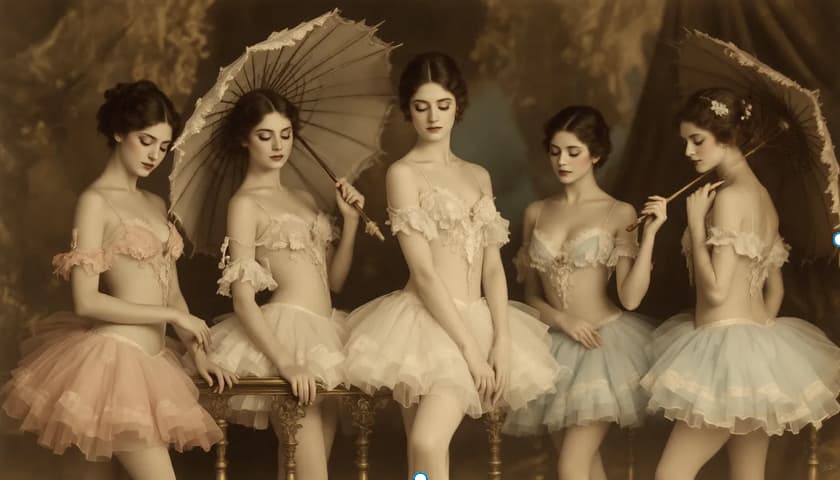
The 20th century saw the emergence of several influential ballerinas who transformed classical ballet and its perception. Vintage photographs of these ballerinas reflect their elegance and the revolutionary changes they introduced to the art form over the decades. To the art form, capturing the essence of youth and the legacy of ballet greats.
Maria Tallchief, known for her powerful stage presence, was one of the most prominent ballerinas of her era. Tanaquil Le Clercq, celebrated for her fluidity and grace, and Suzanne Farrell, admired for her artistic expression and technical precision, each brought unique styles to the stage. These ballerinas played crucial roles in redefining ballet and left legacies that continue to inspire contemporary ballet dancers.
Anna Pavlova, as the solo dancer in ‘The Dying Swan,’ exemplified the unique artistry and emotional expression that a single performer can bring to a dance, highlighting the depth and complexity of solo performances.
The influence of these ballerinas extends beyond their performances. Their contributions to ballet have shaped its evolution, and their legacies are celebrated in the world of dance. The photographs of these iconic figures serve as a testament to their enduring impact on the art form, capturing the perfect pose.
Male Ballet Dancers
Male ballet dancers have also played a significant role in the history of ballet. Rudolf Nureyev, who transitioned from minor roles to becoming a leading performer, brought a new level of artistry and athleticism to ballet. His dynamic performances and charismatic presence captivated audiences, redefining the role of male dancers in ballet.
During rehearsals and performances, male ballet dancers often interact and share experiences with their fellow dancers, fostering a supportive and collaborative environment within ballet companies.
Mikhail Baryshnikov played a significant role in popularizing ballet in mainstream American culture during the 1970s and 1980s. His exceptional technique and expressive performances brought ballet to a wider audience and inspired many aspiring dancers.
Contemporary male ballet dancers, such as Roberto Bolle, continue to make significant contributions to the art form with their exceptional performances. These dancers showcase technical prowess and bring unique artistic interpretations to the stage, further enriching the world of ballet.
Behind the Scenes: Rehearsals and Classes
Behind the scenes, the world of ballet is characterized by dedication and rigorous training. Historical photographs document rehearsals led by choreographers like George Balanchine, offering insight into their creative processes and pre-performance preparation. These images reveal the intricate choreography and synchronization required in ballet, highlighting the dancers’ dedication and discipline.
During rehearsals, the interplay and communication between a solo dancer and other dancers are crucial, showcasing the collaborative nature of ballet.
Rehearsal and class at institutions like the Royal Ballet School in London are well-documented. These photographs illustrate the training environment where aspiring dancers develop their skills under the guidance of renowned choreographers and teachers. Behind-the-scenes pictures provide a glimpse into the hard work and perseverance that define the world of ballet, especially when they are rehearsing for their careers.
Costume and Stage Design
Costume and stage design play a crucial role in enhancing the visual storytelling of ballet, with performers often dressed in innovative designs. Dancers are frequently featured in elaborate costumes and stage designs, which enhance the visual storytelling of ballet. Collaborations with contemporary artists, such as Pablo Picasso, and composers like Igor Stravinsky, transformed ballet into a modern art form. Diaghilev’s Ballets Russes exemplifies such collaborations, with innovative designs that captivated audiences, creating a memorable scene.
Photographs from Balanchine’s ballets often highlight the collaboration between choreographer and designer. Costumes by artists like Isamu Noguchi became central to the visual narrative, blending artistic creativity with functionality. These designs complemented the choreography and enhanced the overall aesthetic of the performances.
Marc Chagall’s work on the ballet ‘Aleko’ incorporated elements of Russian folklore and vibrant colors, creating visually stunning costumes that left a lasting impression, much like precious jewels. These designs, captured in photographs, continue to be celebrated for their artistic brilliance and contribution to ballet.
The Art of Ballet Photography
The art of ballet photography requires a great deal of skill and patience. Photographers must be able to capture the perfect moment in a split second, freezing the grace and elegance of a dancer mid-performance. This task is not just about technical precision but also about conveying the emotion and beauty of the performance.
George Balanchine, a renowned choreographer, collaborated with many famous ballet dancers, including Maria Tallchief and Tanaquil Le Clercq, to create some of the most iconic ballets of all time. Photographs of their performances capture the innovative choreography and the dancers’ artistry, preserving these moments for future generations.
The Royal Opera House in London and Lincoln Center in New York are two of the most famous theatres in the world, hosting a wide range of ballet performances throughout the year. These venues have been the backdrop for countless iconic photographs, showcasing the grandeur and elegance of ballet.
Ballet photography has become an important part of the dance world, with many photographers specializing in capturing the beauty and elegance of ballet. Their work not only documents performances but also celebrates the artistry and dedication of dancers, ensuring that the magic of ballet is preserved for posterity.
The Role of Photographers
Photographers have played a pivotal role in documenting ballet history. Gordon Anthony, who originally aspired to be a dancer, became a prominent chronicler of British ballet with his distinct expressionist style. His photographs captured the essence of ballet and influenced future generations of dancers and photographers.
Barbara Morgan’s collaboration with Martha Graham is another significant example of the impact of dance photography. Her artistic interpretation of Graham’s movements captured the essence of modern dance, creating iconic images that continue to inspire. Technological advancements influenced the evolution of dance photography, allowing for the capture of movement with greater detail and artistic expression.
Historical ballet photographs serve as a visual archive, preserving the artistry and cultural significance of ballet. These images highlight pivotal moments in dance history and offer a glimpse into the world of ballet, influencing future generations of dancers and choreographers.
Preserving Ballet History
Preserving ballet history is crucial to ensuring that this beautiful art form continues to thrive and evolve. The National Ballet and the British Ballet are two companies that have made significant contributions to preserving ballet history, often through meticulous documentation and photography.
Rare photos of dancers from the 1930s to the 1950s, such as those featured in the collection of the State Library of New South Wales, provide a unique glimpse into the past. These images capture the essence of ballet during that period, showcasing the costumes, stage designs, and the dancers’ dedication to their craft.
Jerome Robbins and Mikhail Baryshnikov are two of the most famous choreographers and dancers in ballet history. Their contributions to the art form have left a lasting legacy, inspiring new generations of dancers. Photographs of their performances and rehearsals are invaluable in preserving their impact on ballet.
Ballet photography has played a crucial role in preserving ballet history. Many photographers have dedicated their careers to capturing the beauty and elegance of dance, ensuring that these moments are not lost to time. Their work serves as a visual archive, celebrating the artistry and cultural significance of ballet for future generations to appreciate.
Ballet Today: Continuation of Tradition
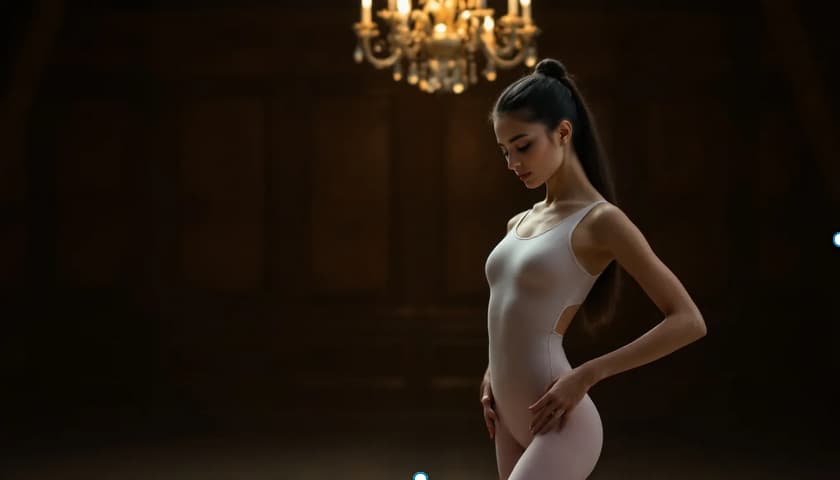
Ballet photography continues today, honoring the art form’s rich history while embracing modern interpretations and techniques. Technological advancements such as electric lighting, portable cameras, and sensitive film have evolved dance photography, allowing for greater artistic expression and detail. Contemporary ballet photography captures dancers in motion, emphasizing the elegance and artistry involved in dancing, preserving ballet’s elegance and grace for future generations.
Modern photographers document ballet performances, rehearsals, and behind-the-scenes moments, ensuring that ballet’s legacy endures. These images celebrate ballet’s timeless beauty and ongoing evolution, showcasing the art form’s relevance and enduring appeal through the lens of a camera photo.
Summary
Throughout the decades-long history of ballet, photography has played a crucial role in capturing its beauty, emotion, and artistry. From the early days of Serge Lifar and Tatiana Riabouchinska to the iconic productions of ‘Swan Lake’ and ‘The Nutcracker’, and the influential figures like George Balanchine and Martha Graham, ballet photography has preserved the essence of this exquisite art form. As we continue to celebrate ballet today, these timeless images serve as a testament to its enduring legacy and a source of inspiration for future generations.
Frequently Asked Questions
Who were some of the key figures in early ballet photography?
Some key figures in early ballet photography are stars Serge Lifar and Tatiana Riabouchinska, alongside photographers such as Max Dupain, who effectively documented the art form’s theatricality.
How did the Ballets Russes influence the art of ballet?
The Ballets Russes profoundly influenced ballet by introducing innovative productions and spotlighting renowned dancers, thereby elevating Russian ballet to international acclaim. Their artistic breakthroughs established new standards and expanded the ballet repertoire.
What was George Balanchine’s impact on ballet photography?
George Balanchine significantly impacted ballet photography by co-founding the New York City Ballet, which allowed innovative choreography to be showcased through iconic images. This not only immortalized performances but also played a crucial role in popularizing ballet in the United States.
How did Martha Graham contribute to modern dance photography?
Martha Graham significantly contributed to modern dance photography by collaborating with photographer Barbara Morgan, resulting in iconic images that captured the essence of her groundbreaking choreography. This partnership helped redefine movement and expression within the art form.
How has ballet photography evolved in contemporary times?
Ballet photography has evolved significantly due to technological advancements, enabling greater artistic expression and detail. Contemporary photographers blend traditional elements with modern techniques, ensuring the art’s enduring appeal.